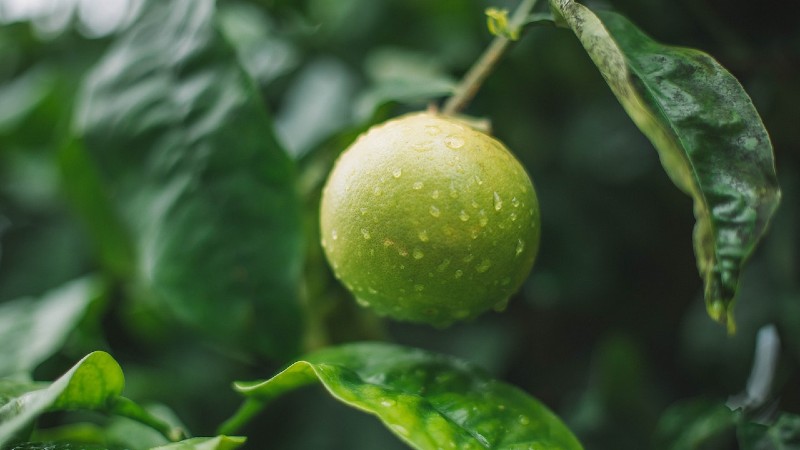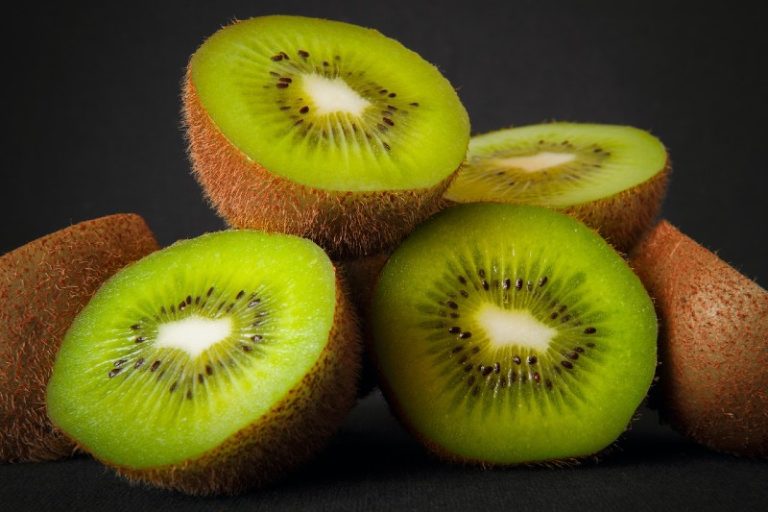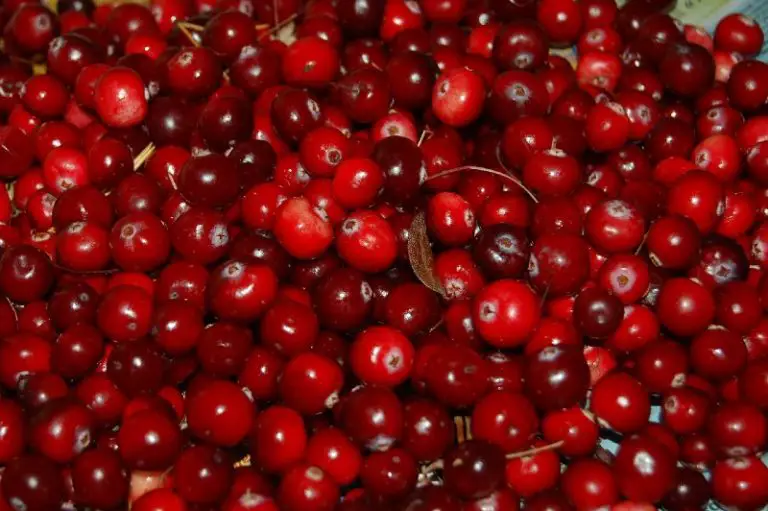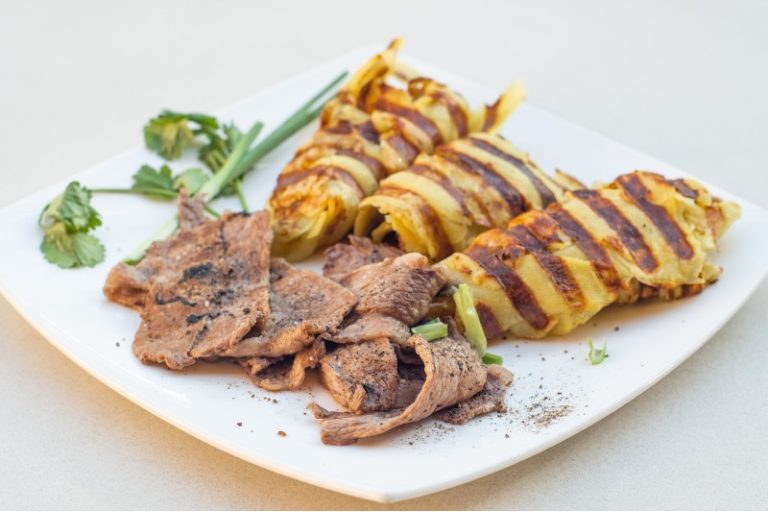From Zesty to Sweet: Best Key Lime Juice Substitutes to Transform Your Recipes Like Magic!
Key lime juice is a beloved ingredient in the culinary world, renowned for its unique flavor and distinct acidity. Derived from the small and aromatic key limes (Citrus aurantiifolia), this tangy and refreshing juice adds a zesty kick to a wide array of dishes and beverages. Key lime juice has a rich history, tracing its origins to the Florida Keys, where it was first cultivated in the 19th century.
In both sweet and savory recipes, key lime juice acts as a flavor enhancer, cutting through rich and heavy dishes with its bright and invigorating taste. Its presence in classic desserts like Key Lime Pie and beverages like the famous Key Lime Margarita has solidified its place as an iconic ingredient in American cuisine.
Reasons for Seeking Alternatives
While key lime juice imparts a unique flavor, it can be challenging to find in some regions, especially outside of the United States. The small and delicate key limes themselves are not always readily available, making it difficult for home cooks and mixologists to access fresh key lime juice. Additionally, key limes have a short season, further limiting their availability.
Moreover, some individuals may have allergies or sensitivities to specific citrus fruits, making key lime juice consumption problematic. In such cases, finding suitable substitutes becomes essential to maintain the essence of key lime flavor without compromising the overall taste and texture of the dishes.
Factors to Consider When Choosing a Substitute
When selecting a substitute for key lime juice, several essential factors should be taken into account to ensure that the replacement closely matches the flavor and acidity level required for your recipe. Here are the key considerations:
Flavor Profile
Key lime juice possesses a unique flavor characterized by its vibrant tanginess and subtle sweetness. When choosing a substitute, look for options that share similar citrus notes and can replicate the distinct taste of key lime juice. Some substitutes may have a more pronounced lemony taste or a slightly different aroma, which can influence the overall profile of your dish or drink.
Acidity Level
One of the defining attributes of key lime juice is its higher acidity compared to other citrus fruits. The level of acidity affects the balance of flavors in your recipe, and the right substitute should provide a comparable zing. It’s crucial to choose a substitute with a similar acidity level to maintain the intended taste of your culinary creation.
Texture and Consistency:
The texture and consistency of key lime juice can impact the structure of certain dishes, particularly in baking. Consider how the substitute will affect the moisture content and binding properties in your recipe to ensure the desired results.
Culinary Use
Different substitutes may excel in specific culinary applications. Some are better suited for desserts, while others shine in savory dishes or beverages. Consider the intended use of the key lime juice substitute to achieve the best possible outcome.
Common Key Lime Juice Substitutes
While no substitute can perfectly replicate the distinct taste of key lime juice, these alternatives come close to providing a similar tangy and refreshing experience. Depending on your culinary needs and ingredient availability, you can choose the best substitute to achieve your desired results.
Regular Lime Juice (Persian Lime)
Flavor and Aroma: Regular lime juice, derived from Persian limes (Citrus x latifolia), shares a close resemblance to key lime juice but is slightly less intense in flavor. Persian limes have a milder, more traditional lime taste with a subtle sweetness.
Acidity Level: Persian limes have a comparable acidity level to key limes, making them an excellent substitute in most recipes.
Culinary Uses: Regular lime juice can be used interchangeably in recipes that call for key lime juice, including desserts, beverages, salads, and marinades.
Lemon Juice
Flavor and Aroma: Lemon juice is tangy and bright, with a more pronounced tartness compared to key lime juice. It has a distinct citrus aroma that adds a refreshing note to dishes.
Acidity Level: Lemon juice has a slightly higher acidity level than key lime juice, which may require adjustments in some recipes.
Culinary Uses: Lemon juice can be used as a substitute for key lime juice in various recipes, especially in savory dishes, dressings, and marinades. However, its stronger tartness might alter the overall flavor profile of sweet desserts.
Lime Cordial or Lime Concentrate
Flavor and Aroma: Lime cordial or concentrate offers a concentrated lime flavor, similar to key lime juice, but with added sweetness.
Acidity Level: The acidity of lime cordial can vary, so it’s essential to check the label for specific acidity levels.
Culinary Uses: Lime cordial or concentrate works well as a key lime juice substitute in beverages, cocktails, and dessert recipes where a sweeter profile is desired.
Lime Extract
Flavor and Aroma: Lime extract captures the essence of lime flavor and aroma in a concentrated form.
Acidity Level: Lime extract does not contribute acidity to the same extent as fresh lime juice, so it may require adjustments in acidic recipes.
Culinary Uses: Lime extract is ideal for adding lime essence to baked goods and desserts but might not be suitable for recipes where acidity is a crucial component.
Yuzu Juice
Flavor and Aroma: Yuzu juice, derived from the Asian yuzu fruit, offers a distinctive and complex citrus flavor, with hints of mandarin orange and grapefruit.
Acidity Level: Yuzu juice has a similar acidity level to key lime juice, making it a compatible substitute.
Culinary Uses: Yuzu juice can be used as a key lime juice alternative in a variety of recipes, adding a unique citrus twist to both sweet and savory dishes.
Vinegar (White Wine Vinegar, Apple Cider Vinegar)
Flavor and Aroma: Vinegars provide a tangy and acidic flavor, but they lack the specific citrus notes of key lime juice.
Acidity Level: Vinegars, particularly white wine vinegar and apple cider vinegar, have moderate acidity that can be adjusted to suit recipes.
Culinary Uses: Vinegars are best suited as substitutes in dressings, marinades, and savory dishes where a tangy kick is desired but without the distinct lime flavor.
Cream of Tartar
Flavor and Aroma: Cream of tartar has a neutral taste and does not contribute any citrus flavor.
Acidity Level: Cream of tartar is acidic and can be used to increase the acidity in recipes.
Culinary Uses: Cream of tartar is primarily used in baking, where it acts as a leavening agent and stabilizes egg whites in meringues.
Key Lime Zest
Flavor and Aroma: Key lime zest captures the aromatic oils and essence of key limes without the acidity of the juice.
Culinary Uses: Key lime zest can be used to enhance the flavor of recipes and works well in both sweet and savory dishes.
Citric Acid
Flavor and Aroma: Citric acid is pure acidity and does not provide any citrus flavor.
Acidity Level: Citric acid can be used to increase acidity in recipes, but it lacks the distinct taste of key lime juice.
Culinary Uses: Citric acid is often used in canning, preserving, and certain beverages but is not a direct flavor substitute for key lime juice.
Lime Oil
Flavor and Aroma: Lime oil is a concentrated essence of lime with a strong, pure lime flavor.
Culinary Uses: Lime oil should be used sparingly as a flavor enhancer in recipes that require a potent lime essence.
Choosing the Right Replacement for Different Recipes
The versatility of key lime juice substitutes allows you to seamlessly adapt them to various culinary creations. Each substitute brings its unique characteristics to the table, making it essential to select the appropriate one based on the recipe you’re preparing. Here’s a guide to help you choose the right substitute for different types of dishes:
Baking and Desserts
- Key Lime Pie: For the authentic key lime pie experience, opt for either regular lime juice or fresh key lime juice if available. The subtle sweetness and tanginess of these substitutes complement the creamy custard filling and graham cracker crust.
- Cakes and Cupcakes: Regular lime juice, lime cordial, or lime extract can be used to infuse cakes and cupcakes with a delightful lime flavor. Adjust the quantity according to your desired level of tanginess.
- Cookies: Lime zest or lime extract can add a zesty twist to cookies without altering their texture significantly. Be cautious with lime extract, as it is highly concentrated and should be used sparingly.
Beverages and Cocktails
- Key Lime Margarita: To recreate the classic Key Lime Margarita, use fresh key lime juice or a combination of regular lime juice and a touch of lime cordial for added sweetness.
- Limeades and Lemonades: Freshly squeezed regular lime juice or a mix of regular lime and lemon juice will provide a refreshing citrus punch to your limeades and lemonades.
- Mocktails: When crafting non-alcoholic beverages, any substitute with a suitable acidity level can be used to deliver a tangy and vibrant taste to your mocktails.
Salad Dressings and Marinades
- Vinaigrettes: Regular lime juice, lemon juice, or a combination of both can be used in vinaigrettes to impart a zesty and acidic base.
- Marinades: Regular lime juice, yuzu juice, or even a splash of apple cider vinegar can work well to add tanginess and enhance the flavor of marinades for meats and vegetables.
Savory Dishes
- Thai and Mexican Dishes: Regular lime juice or a mix of regular lime and lemon juice can be used to add an authentic citrus note to Thai and Mexican recipes.
- Soups and Curries: Lime zest or a dash of lime oil can elevate the flavor of soups and curries, providing a bright, fresh taste without introducing excess liquid.
Tips for Using Key Lime Juice Replacements
Substituting key lime juice in your recipes requires careful consideration and adjustment to ensure the best possible results. While the alternatives can come close to replicating the flavor and acidity of key lime juice, there are essential tips to keep in mind when using substitutes:
Proper Measurement and Ratios
- Follow Recipe Guidelines: Whenever possible, use a recipe that specifically calls for the substitute you plan to use. Recipes developed with a particular substitute in mind will provide the most accurate measurements and ratios for achieving the intended taste and texture.
- Adjust the Quantity: Some substitutes may be more potent in flavor or acidity than others. Start by using slightly less than the recommended quantity of the substitute, and gradually add more to reach the desired taste. Remember that it’s easier to add more substitute than to reduce its impact on the dish.
Adjusting for Acidity
- Experiment with Acidity Levels: If your substitute has a lower acidity level than key lime juice, consider adding a small amount of citric acid or a splash of lemon juice to increase the tartness. Be cautious not to over-acidify the dish.
- Balancing Sweetness: Some substitutes, like lime cordial or lime concentrate, may be sweeter than fresh key lime juice. Adjust the sweetness in the recipe to account for the difference in flavor.
Enhancing Flavor Profiles
- Incorporate Lime Zest: When using a substitute without the distinct lime aroma, consider adding freshly grated key lime zest or a few drops of lime oil to enhance the flavor and create a more authentic lime experience.
- Complement with Citrus Zest: If using a substitute with a milder citrus flavor, consider adding zest from other citrus fruits like lemons or oranges to create a balanced and vibrant flavor profile.
Culinary Use Considerations
- Savory vs. Sweet: Some substitutes may excel in savory dishes, while others work better in sweet recipes. Select the appropriate substitute based on the type of dish you are preparing.
- Beverages vs. Cooking: Different substitutes may be more suitable for beverages and cocktails, while others may perform better in cooking applications. Be mindful of the intended use when selecting a substitute.
Taste Testing
- Sample the Substitute: Before adding the substitute to your recipe, taste it on its own to understand its flavor profile and acidity level. This will give you a better idea of how it will interact with the other ingredients in your dish.
- Taste Throughout Cooking: Continuously taste and adjust the dish as you cook to ensure that the flavors are balanced and meet your preferences.
Frequently Asked Questions (FAQs)
As you explore the world of key lime juice substitutes, you may encounter some common questions and concerns. In this section, we address frequently asked questions to provide you with further insights and clarity about using these alternatives effectively.
1. Can I use bottled lime juice as a substitute?
Yes, bottled lime juice is a viable substitute for key lime juice, especially when fresh limes are not available. However, be sure to read the label to check for any additional preservatives or additives that might affect the flavor. Choose 100% pure lime juice without added sugars or artificial flavors for the best results.
2. How do I store key lime juice substitutes?
Freshly squeezed lime and lemon juice can be stored in an airtight container in the refrigerator for up to one week. For longer storage, consider freezing the juice in ice cube trays and transferring the frozen cubes to a resealable plastic bag. Alternatively, commercial substitutes such as lime cordial or lime concentrate typically have longer shelf lives, and their storage instructions can be found on the product packaging.
3. Will the substitution alter the color of my dish?
In some recipes, the substitution of key lime juice with certain substitutes may affect the color slightly due to differences in pigmentation. For instance, using lemon juice might result in a slightly paler hue, while using lime cordial might add a greenish tint. However, these color changes are usually minor and do not significantly impact the overall appearance of the dish.
4. Can I use key lime juice substitutes in recipes that require fresh key limes?
Key lime juice substitutes can often be used in recipes that call for fresh key limes. However, be mindful that the unique flavor of fresh key limes cannot be entirely replicated by substitutes. If a recipe specifically calls for fresh key limes, using a substitute might alter the taste and aroma, and the results may differ from the original intent.
5. Can I combine different substitutes in a recipe?
Yes, you can experiment with combining different substitutes to create a unique flavor profile that suits your preferences. For instance, mixing regular lime juice with a hint of lime zest or lime oil can enhance the overall lime essence of a dish. Just remember to taste as you go and adjust the quantities to achieve the desired balance of flavors.
6. Are there any substitutes for key lime juice with no citrus flavor?
If you need a substitute without any citrus flavor, consider using a mix of vinegar (white wine vinegar or apple cider vinegar) and a pinch of citric acid. This combination can provide the desired acidity without introducing any citrus notes to the dish.
Understanding Key Lime Juice
Origin and Characteristics of Key Limes
Key limes, also known as Mexican limes or West Indian limes, are a small citrus fruit with a distinctive flavor profile. They are believed to have originated in Southeast Asia and were brought to the Americas by Spanish explorers. Over time, they found their way to the Florida Keys, where the warm climate and sandy soil proved to be ideal for their cultivation.
Key limes are smaller and rounder than the more common Persian limes, with a thin, smooth, and bright green skin that turns yellow as they ripen. The fruit’s flesh is pale yellow and contains seeds.
Unlike Persian limes, key limes have a higher acidity level and a more intense, aromatic flavor, with a perfect balance of sweetness and tanginess.
Nutritional Profile of Key Lime Juice
Key lime juice is not only a flavor powerhouse but also a source of essential nutrients. It is rich in vitamin C, an antioxidant that boosts the immune system and promotes healthy skin. Additionally, key lime juice contains small amounts of vitamins A, B-complex, and minerals like potassium and calcium.
Culinary and Mixology Applications of Key Lime Juice
Key lime juice finds its way into a myriad of culinary creations, adding a burst of flavor to both sweet and savory dishes. Some popular applications include:
- Key Lime Pie: A quintessential dessert that showcases the bright and tangy flavor of key lime juice in a creamy custard, encased in a buttery graham cracker crust.
- Beverages and Cocktails: Key lime juice adds a refreshing twist to a variety of drinks, from the iconic Key Lime Margarita to mocktails and limeades.
- Salad Dressings and Marinades: The acidity of key lime juice makes it a perfect base for tangy dressings and marinades, enhancing the flavors of salads, grilled meats, and seafood.
- Sauces and Condiments: Key lime juice can be incorporated into sauces and condiments to provide a zesty kick, elevating the taste of dishes like ceviche, salsas, and aiolis.
- Desserts and Baked Goods: Key lime juice can be used in a wide range of sweet treats, such as cakes, cupcakes, cookies, and cheesecakes, infusing them with a delightful citrus flavor.
- Savory Dishes: In savory cooking, key lime juice can be employed in various recipes, including Thai and Mexican dishes, curries, and soups, to add brightness and depth.




